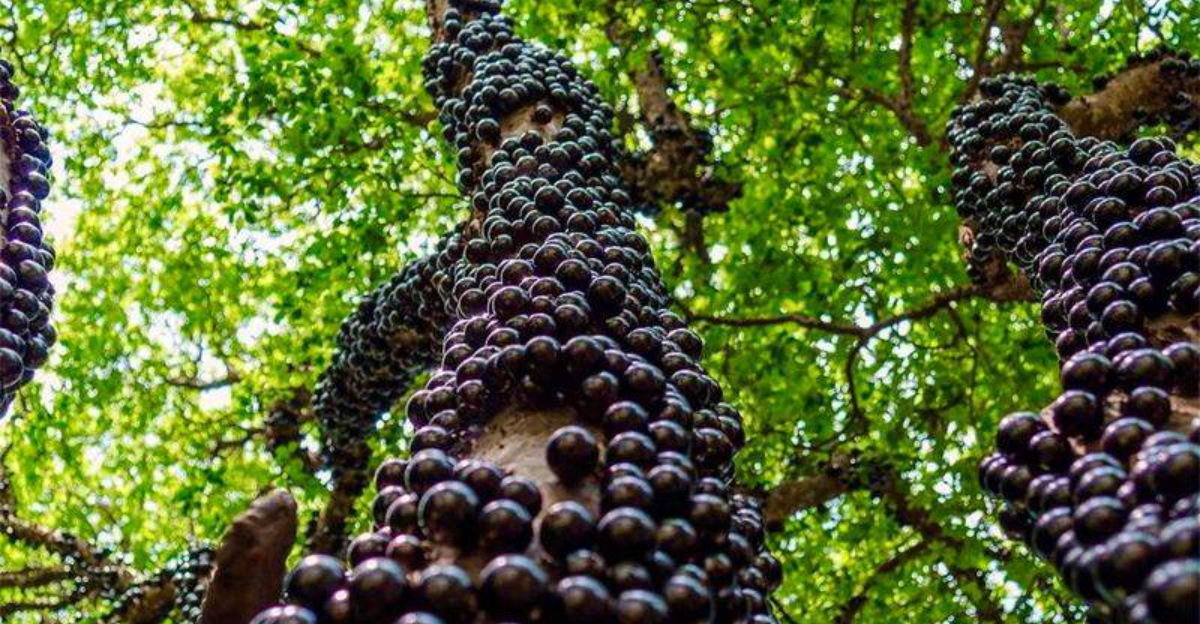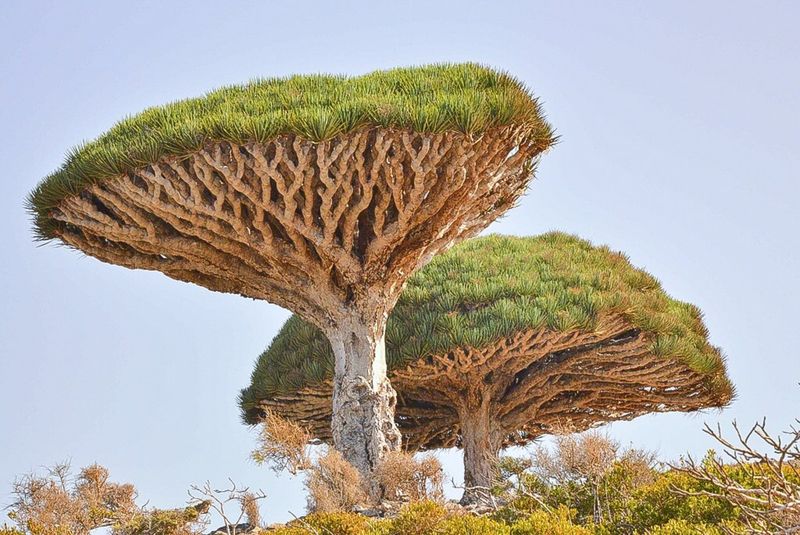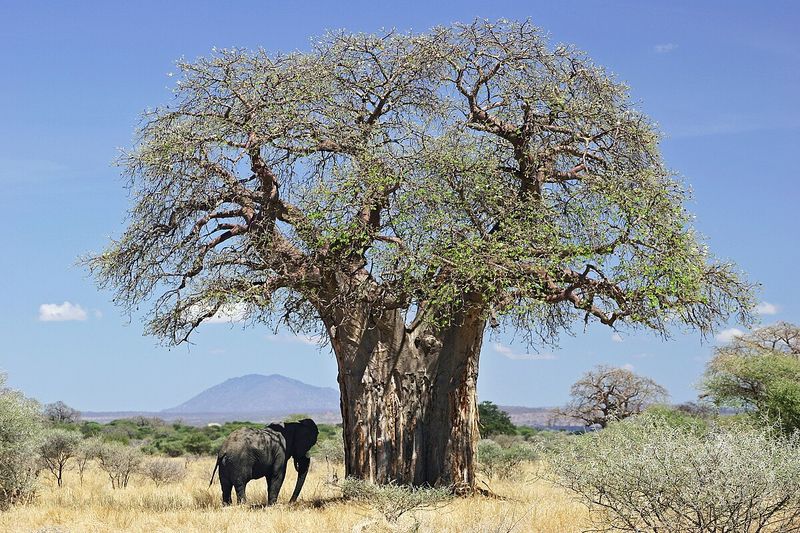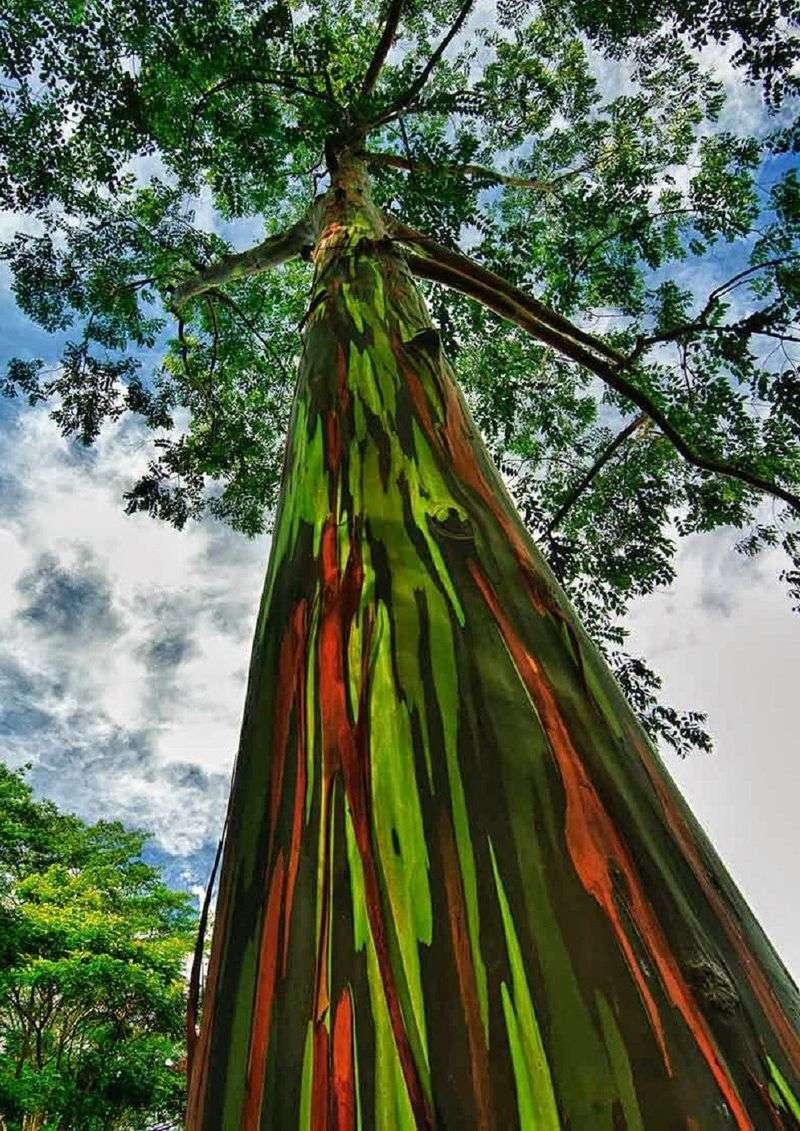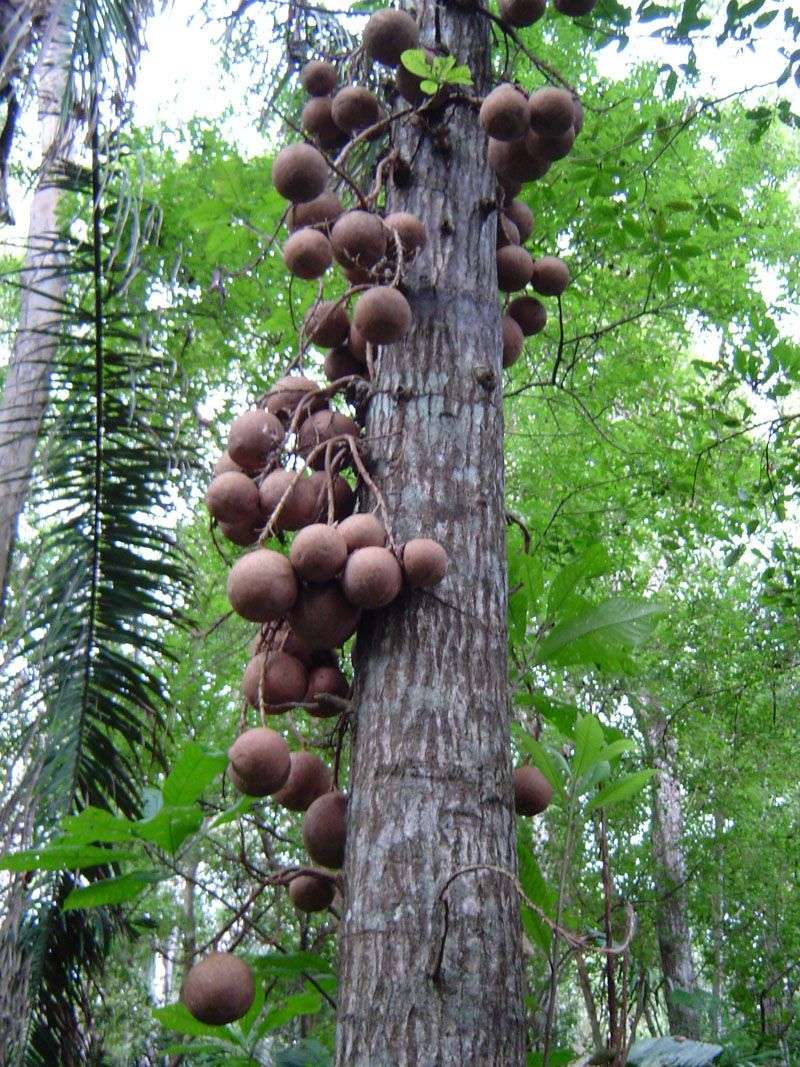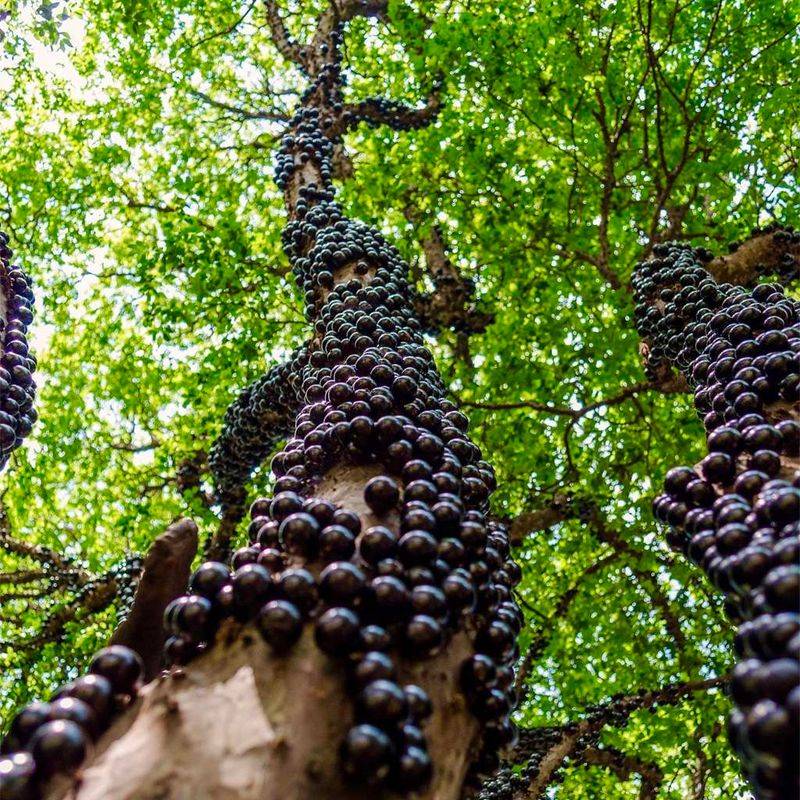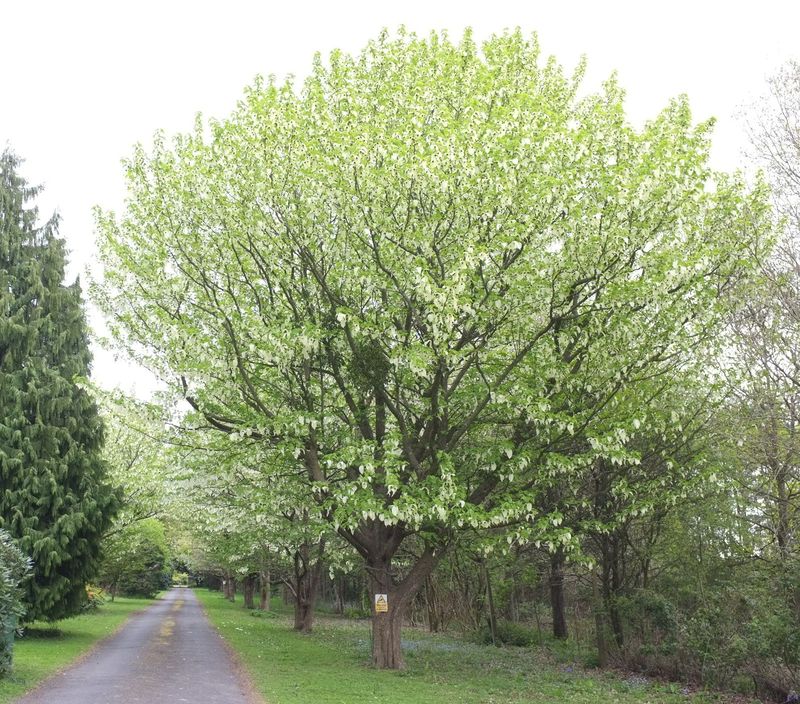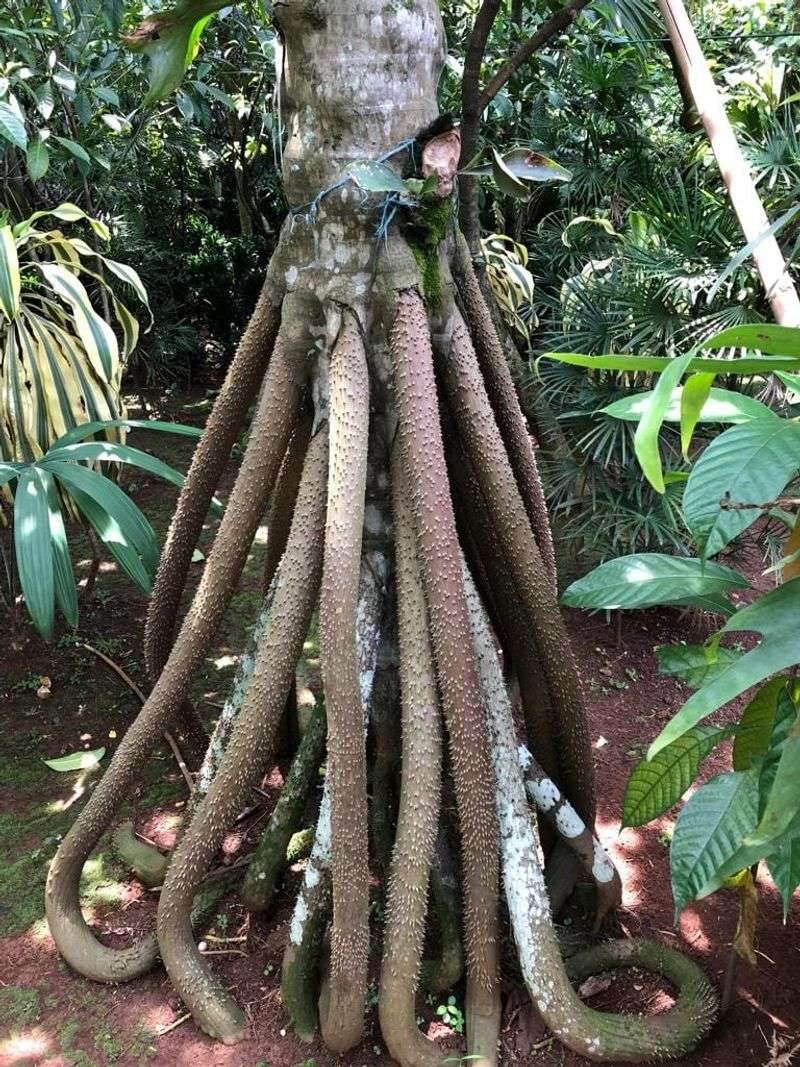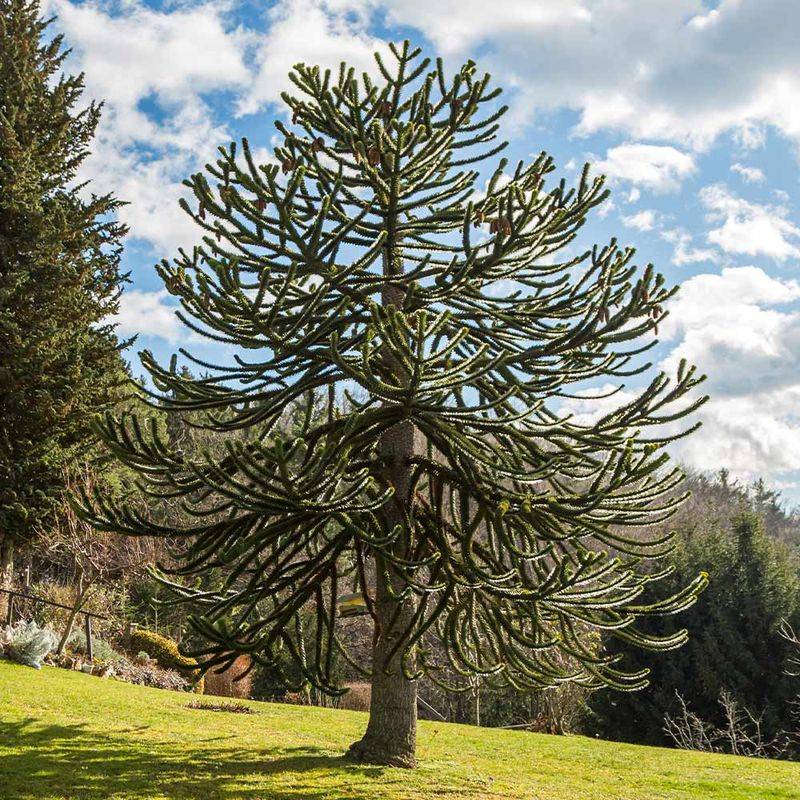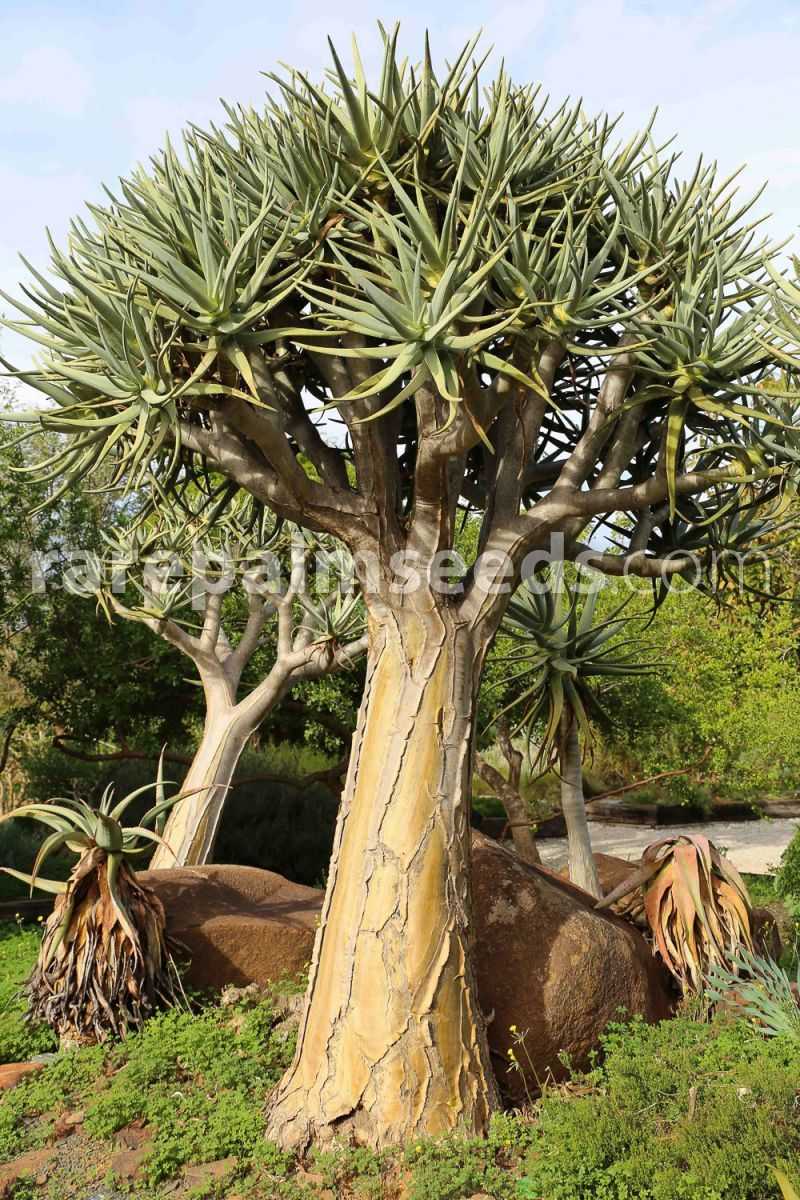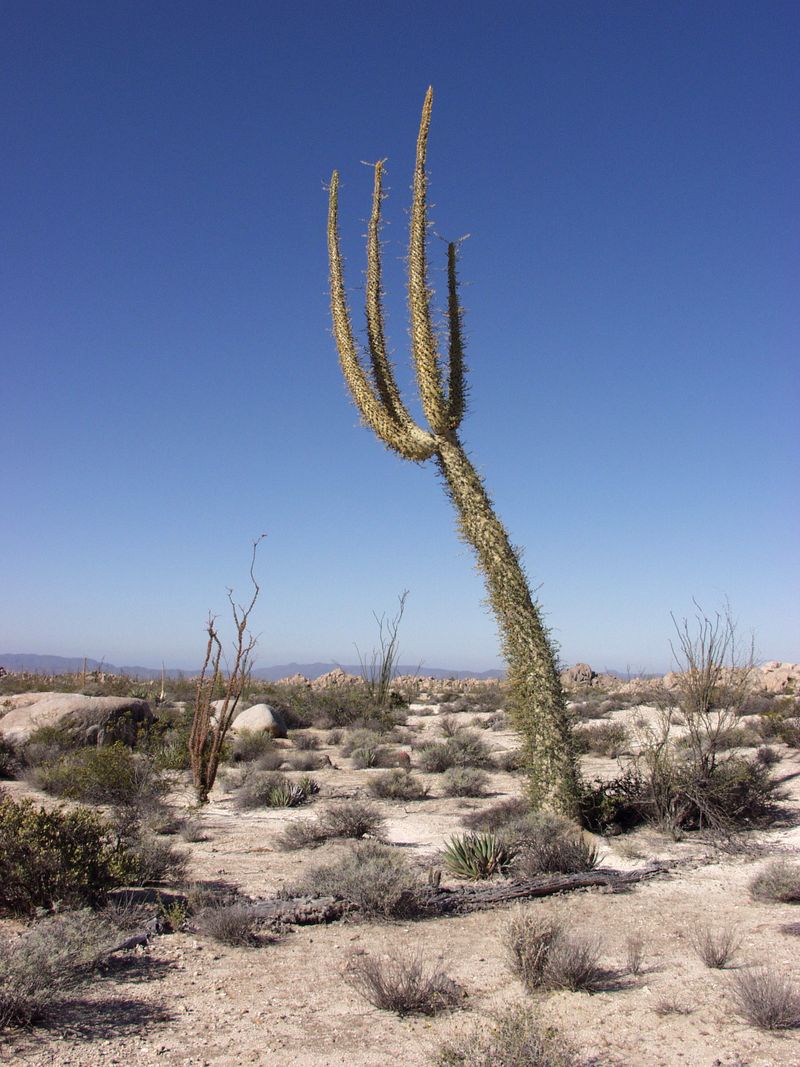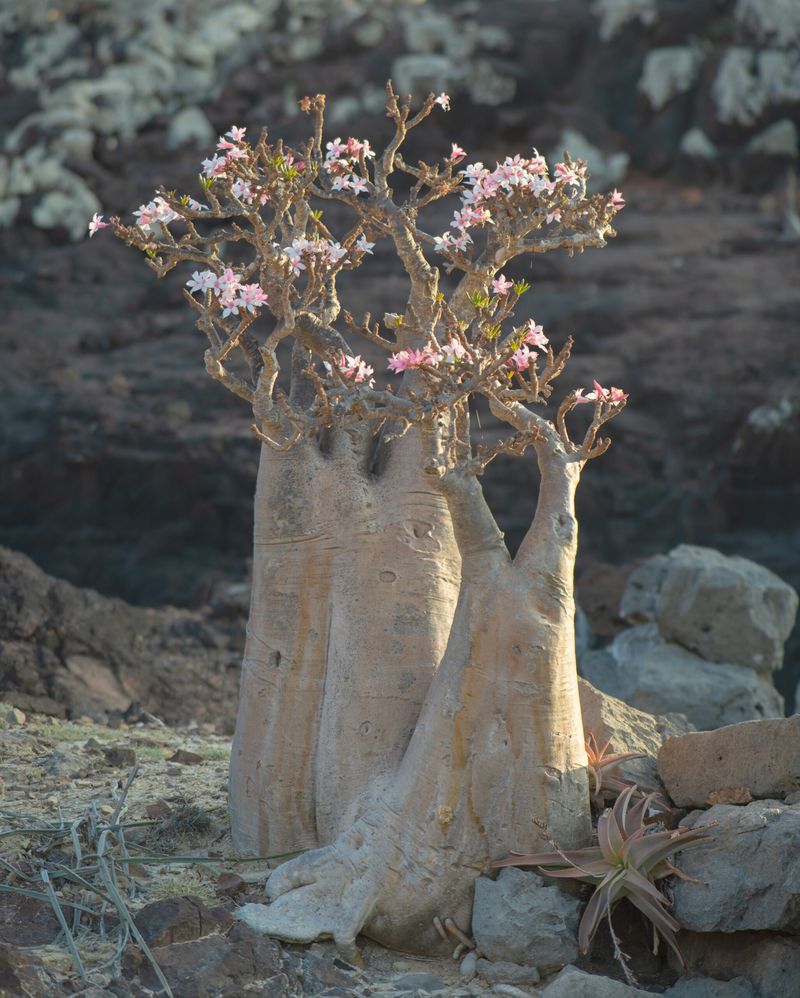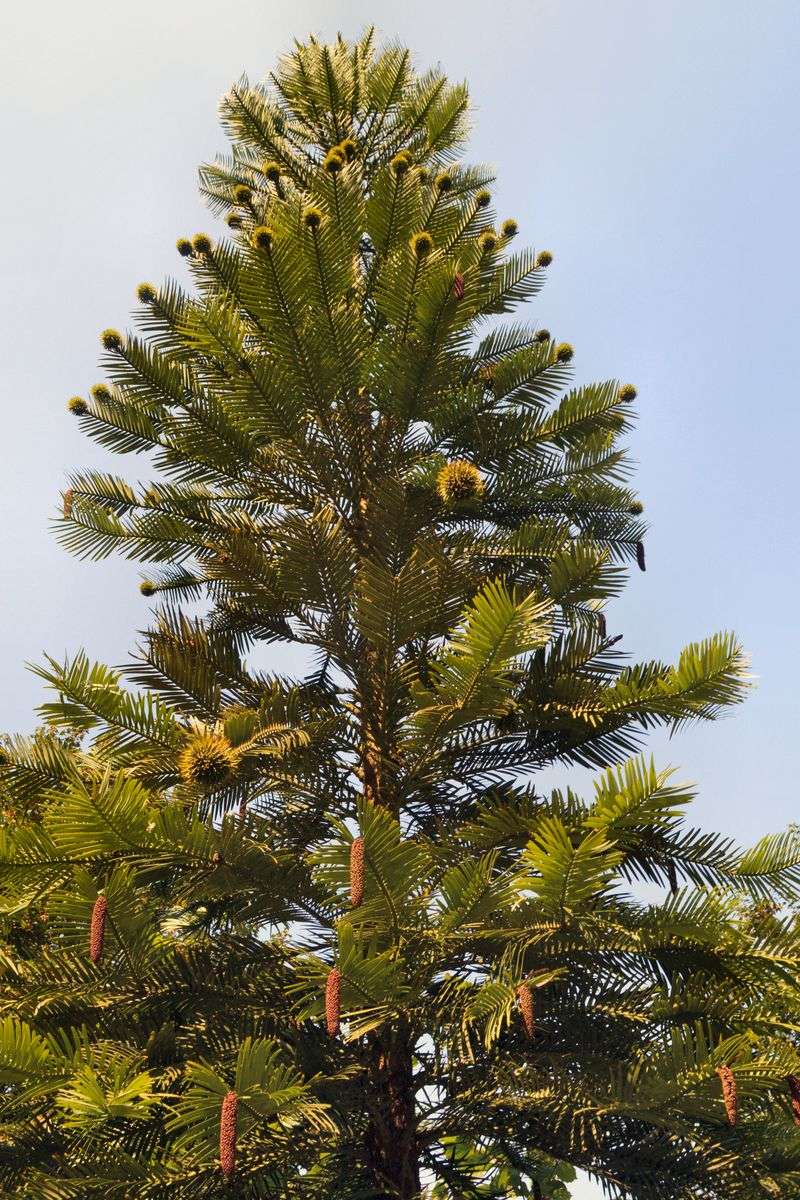In the vast tapestry of Earth’s flora, some trees stand out as truly peculiar, resembling creations from an alien world. From their unusual shapes to their vibrant colors, these trees captivate and intrigue.
Explore this collection of Earth’s most bizarre and fascinating trees, each with its own unique charm and story. Whether it’s their ability to move, their ghostly appearances, or their prehistoric ties, these trees redefine what we know about nature.
Join us on this journey through the extraordinary world of alien-like trees, where each species is a testament to nature’s creativity and wonder.
1. Dragon’s Blood Tree (Dracaena cinnabari)
Found on Yemen’s Socotra Island, Dragon’s Blood Tree is renowned for its unique umbrella shape and mystical red sap. This sap, reminiscent of dragon’s blood, gives the tree its name and adds to its legendary allure. Its thick branches spread outwards, creating a dense canopy that provides shelter in the arid landscape.
Historically, the red sap was used for medicinal purposes and as a dye. The tree thrives in harsh conditions, showcasing nature’s resilience and adaptability. It’s a natural wonder that draws tourists and botanists alike, eager to witness its otherworldly beauty.
2. Baobab Tree (Adansonia spp.)
The Baobab Tree, often called the “Tree of Life,” is iconic for its huge, swollen trunk and sparse canopy. Found in the African savanna, it looks as if it’s been planted upside-down, with roots reaching for the sky. This unique shape serves as a water storage solution during dry seasons.
Baobabs can live for thousands of years, witnessing the rise and fall of civilizations. Their fruit, known as monkey bread, is rich in nutrients, offering sustenance to both animals and humans. The Baobab is a symbol of resilience and life in tough climates.
3. Rainbow Eucalyptus (Eucalyptus deglupta)
The Rainbow Eucalyptus stands out with its vibrant, multicolored bark that peels away to reveal bright streaks of blue, orange, green, and purple. Native to the Philippines, this tree is a living canvas of brilliant hues, changing colors as it grows.
Its towering presence and vivid appearance make it a favorite among photographers and artists. The colors are most intense in the tree’s natural tropical habitat, where humidity aids the bark’s peeling. Beyond its beauty, the Rainbow Eucalyptus contributes to the ecosystem by supporting local wildlife and providing timber.
4. Cannonball Tree (Couroupita guianensis)
The Cannonball Tree is famous for its large, spherical fruits that hang directly from its trunk, resembling cannonballs. These unusual fruits, along with the tree’s fragrant, colorful flowers, make it a striking presence in tropical forests.
Native to South America, the tree’s flowers are pollinated by bats, adding another layer of intrigue to its reproductive process. The fruits are hard and heavy, and while not commonly eaten by humans, they provide food for various animal species. The Cannonball Tree is a fascinating example of nature’s quirky creativity.
5. Jabuticaba Tree (Plinia cauliflora)
The Jabuticaba Tree is truly unique, as it appears to grow grapes directly on its bark rather than its branches. These dark purple fruits are sweet and juicy, native to Brazil, where they are a local delicacy.
The tree blooms several times a year, offering a continuous supply of fruit. Its fruits are used to make jellies, wines, and liqueurs, cherished for their rich flavor. The Jabuticaba’s unusual fruiting pattern and delicious produce make it a beloved tree among locals and a curious attraction for visitors.
6. Ghost Tree (Davidia involucrata)
Known as the Ghost Tree or Dove Tree, Davidia involucrata is famous for its white bracts that resemble ghostly figures floating among the branches. These bracts surround small, inconspicuous flowers, creating a hauntingly beautiful display.
Native to China, the tree blooms in spring, transforming the forest into a sea of white. Its unusual appearance and ethereal beauty make it a prized specimen in gardens and parks. The Ghost Tree’s delicate charm and mysterious aura captivate all who encounter it, offering a glimpse into nature’s softer, more artistic side.
7. The Walking Palm (Socratea exorrhiza)
The Walking Palm is a marvel of nature, with stilt-like roots that allow it to “move” over time. Found in Central and South American rainforests, the tree slowly shifts its position to reach sunlight, a unique adaptation to its environment.
Its ability to relocate makes it one of the most intriguing trees in the world. Though it doesn’t actually walk, its gradual movement over years is enough to fascinate scientists and observers. The Walking Palm’s distinct mobility and survival strategy highlight the dynamic and ever-changing nature of rainforests.
8. Monkey Puzzle Tree (Araucaria araucana)
With its spiky, scale-like leaves and rigid branches, the Monkey Puzzle Tree looks like a relic from the prehistoric era. Native to Chile and Argentina, its distinctive appearance makes it a living fossil in modern times.
The tree’s leaves form a protective barrier against herbivores, while its seeds provide nourishment for various wildlife. Often found in gardens and parks, the Monkey Puzzle Tree’s unusual form and history make it an intriguing subject for botanists and nature lovers. Its name hints at the difficulty monkeys would have climbing its spiny structure.
9. Quiver Tree (Aloe dichotoma)
The Quiver Tree, with its cactus-like form and smooth, peeling bark, is a striking figure in Namibia’s arid landscapes. Adapted to survive harsh desert conditions, it stores water in its trunk to endure droughts.
Local indigenous people historically used its hollowed branches to make quivers for their arrows, giving the tree its name. The Quiver Tree blooms with bright yellow flowers, adding a splash of color to the barren surroundings. Its ability to thrive in extreme environments showcases the adaptability and resourcefulness of desert flora.
10. Boojum Tree (Fouquieria columnaris)
Resembling an upside-down carrot, the Boojum Tree grows in twisted, bizarre formations that captivate and amuse. Native to Mexico’s Baja California, it thrives in arid, rocky environments where few other plants can survive.
Its name comes from Lewis Carroll’s poem, reflecting its whimsical appearance. The tree’s spindly form and peculiar growth patterns make it a standout species in desert landscapes. The Boojum Tree’s unusual shape and tenacity in harsh conditions highlight the diversity and creativity of life in arid regions.
11. Socotra Bottle Tree (Adenium obesum socotranum)
The Socotra Bottle Tree looks like something out of a cartoon, with its bulbous trunk and small pink flowers. Found on Socotra Island, it is well adapted to the harsh, rocky environment.
Its water-storing trunk ensures survival during dry periods, while its unusual shape attracts tourists and photographers. The tree’s resilience and quirky appearance have made it an iconic symbol of Socotra’s unique biodiversity. The Socotra Bottle Tree is a testament to the ingenuity of plant life in adapting to challenging conditions.
12. Wollemi Pine (Wollemia nobilis)
Once thought extinct, the Wollemi Pine is a living fossil from the age of the dinosaurs. Discovered in Australia in 1994, its unique bark and foliage distinguish it from modern trees.
The pine’s discovery excited botanists worldwide, offering a glimpse into ancient ecosystems. Its resilience and survival through millennia make it a symbol of nature’s enduring power. The Wollemi Pine’s fascinating history and prehistoric ties continue to intrigue scientists and nature enthusiasts, while conservation efforts ensure its protection for future generations.
